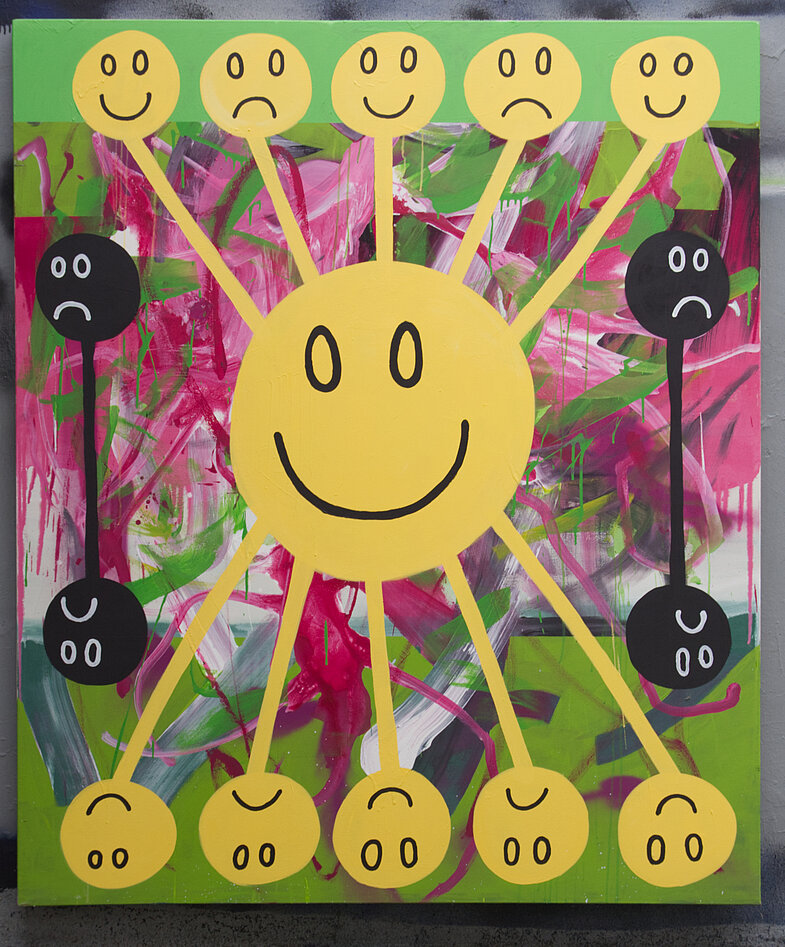
Kreuzviertel, Innenstadt West, Hörde, Nordstadt, Hafen, Süd, Borsigplatz, Funkenberg or Clarenberg could be the list for this exhibition. Or also: NRW prize winner, winner of the Kubo art prize or the DEW21 art prize, master students of relevant art academies, participants in international film festivals and Instagram influencers ... because:
The neighborhood of the Künstlerhaus Dortmund is home to many exciting artists. The members and KIN of the Kuenstlerhaus Dortmund invite artists from the surrounding area for the exhibition "go local". With a concept that is as simple as it is convincing, a look at artistic positions from the Ruhr region is created - an exciting group exhibition in which the artworks are brought, as it were, under the arm from the studio to the exhibition rooms. Old acquaintances meet completely new faces and, despite the newness, cross-connections can be drawn throughout the city.
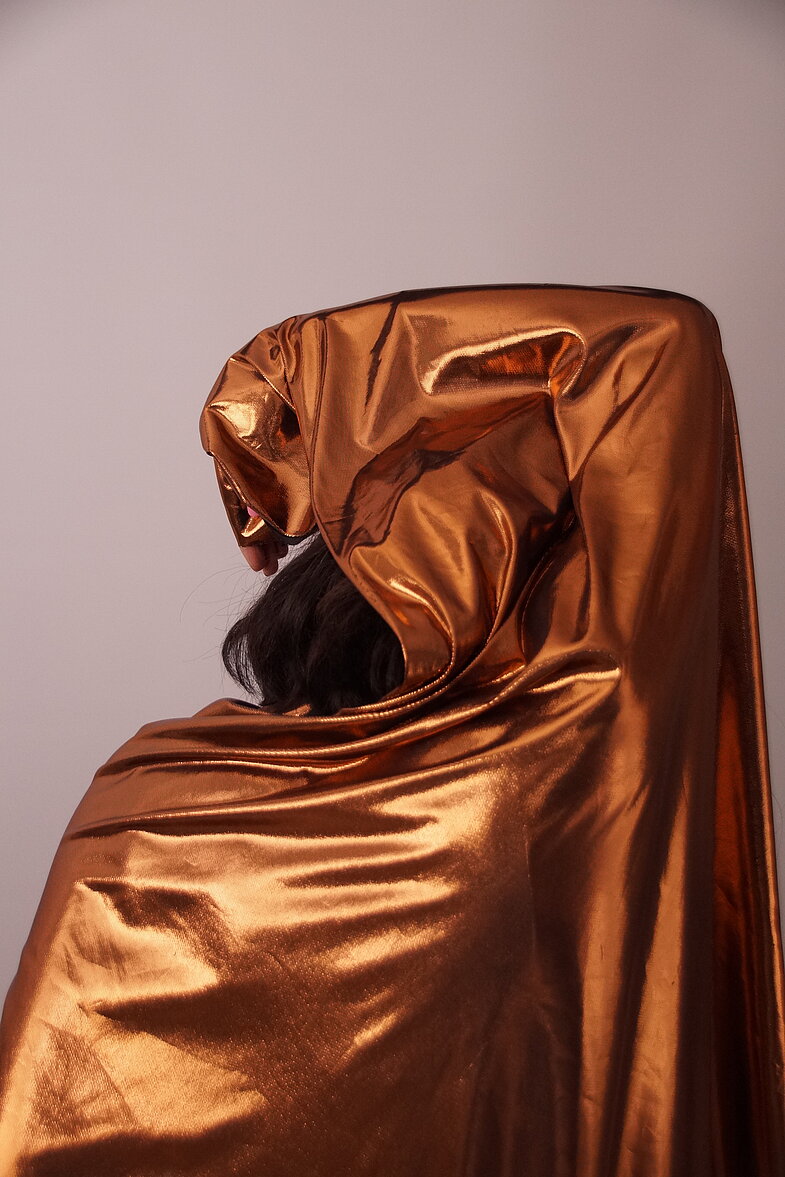
Studies on fabrics. Can soft appear hard and hard appear soft?
How do fabrics react to light?
How do they interact with movements and people?
Can an effect be created directly and also abstractly?
An experimental attempt to connect associations intermedially.
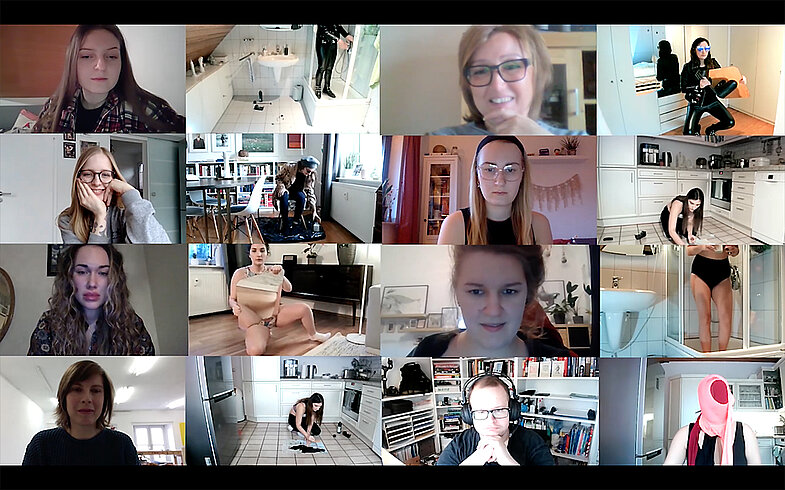
With her One-on-One Performances, Melisa Atalay offers viewers the opportunity to watch an individual performance via Zoom. By pre-selecting basic attributes, the viewers participate in shaping the performance in the sense of a commissioned work, thus ensuring a unique, singular experience. Through her performances, Melisa Atalay comments on the one hand on the increasing urge to create ever more individualised experiences, and on the other hand creates a digital third space to enable participation in artistic events even in times of Corona restrictions.
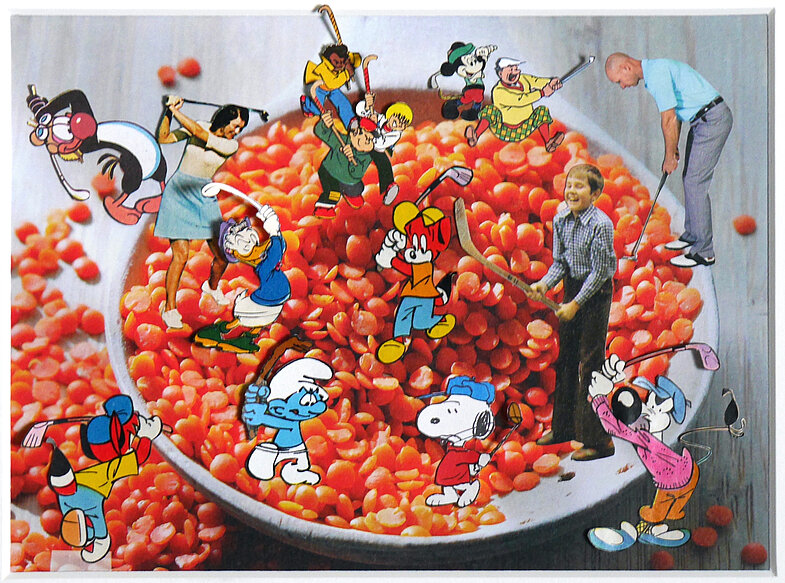
The group of works "… bleiben Sie besser Zuhause“ (... better stay at home) comprises an unlimited number of collages from old travel guides, comics and magazines. It deals with vacation destinations or supposed dream places. The call often used during the pandemic: "Stay Home" is quoted here in a humorous and equally serious way.
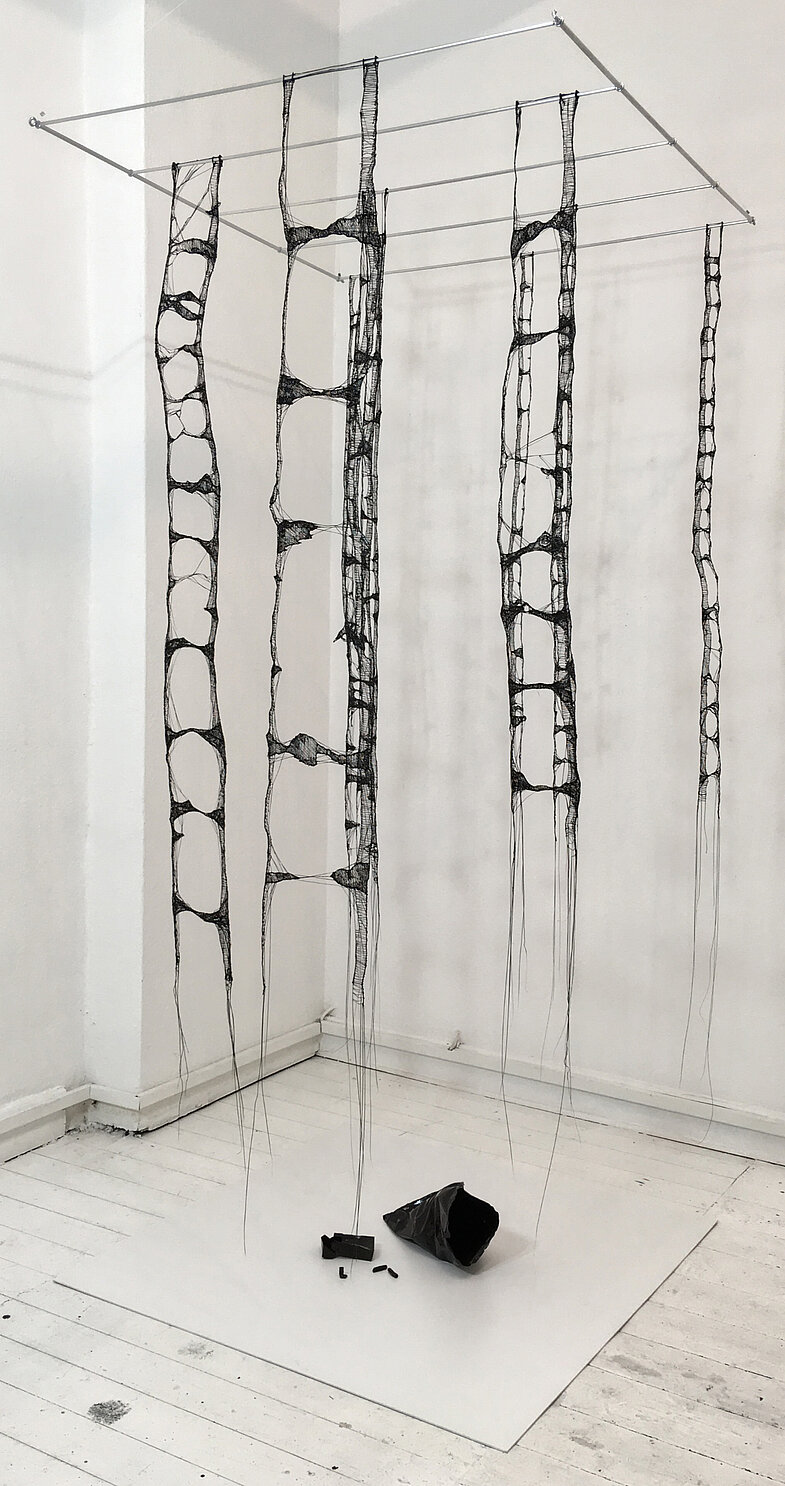
Marc Bühren, born in 1974, lives and works in Dortmund since 2006. He studied communication design at the Bergische Universität Wuppertal. Bühren has been working as a full-time visual artist since 2008. The artist is a member of the Westfälischer Künstlerbund Dortmund e.V., Bund Bildender Künstler Hagenring e.V. and the Berufsverband Bildender Künstler Ruhrgebiet e.V.. Marc Bühren often uses multiple drawing as a basic principle of the artistic expression in his three-dimensional works. His works are filled with symbols, signs and mathematical notations that give clues to the recurring patterns of nature. Man is part of this web. Consumption and exploitation, ecology and sustainability play a central role. But the acting human being always moves within this natural law structure and is thus a decisive factor of the global ecosystem.
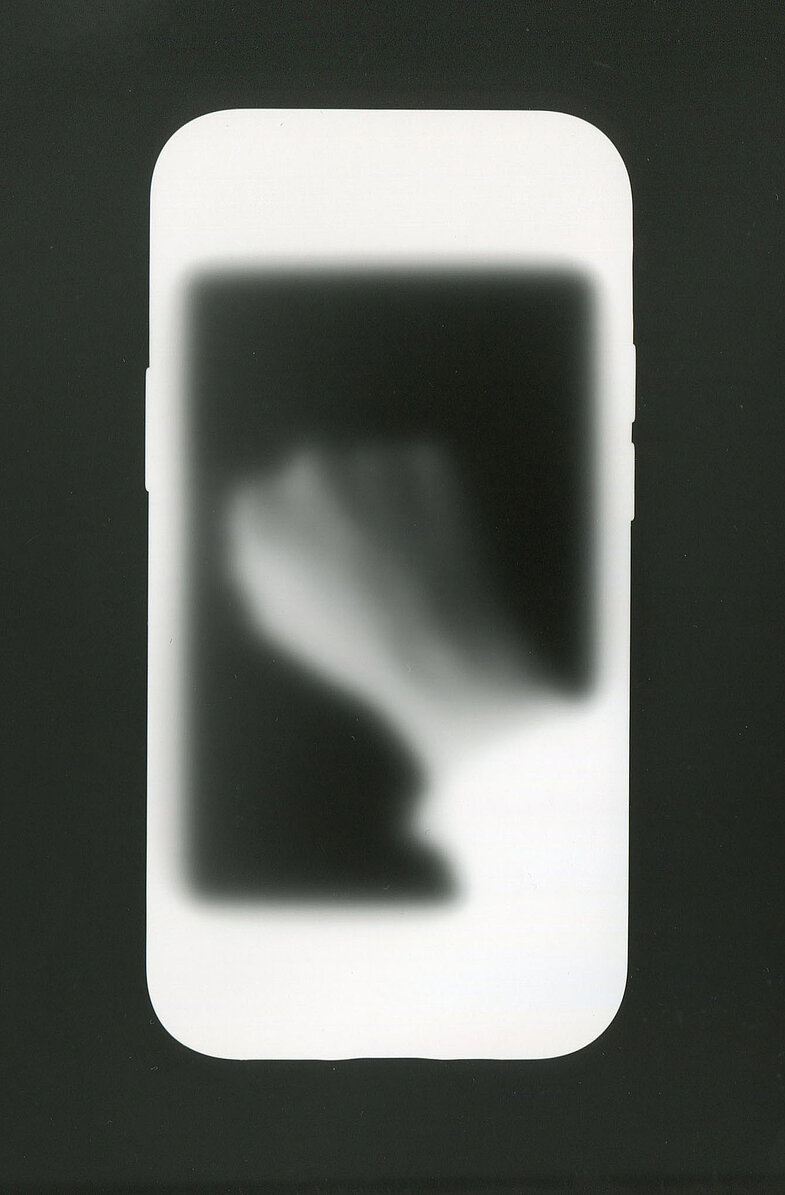
The exhibition “go local” gives an insight into the production of my current project Strangers Outta Space (S.O.S.). S.O.S. is a complex of analog display photograms, video works, drawings, performative elements as well as zinc sheet objects. Its based on the inspiration of objects from the "empty space" and the related linguistic constructions. A video that will be shown is based on the conversion of analog display photograms.
If everything swallows up, only a strong cough from off(space) helps.
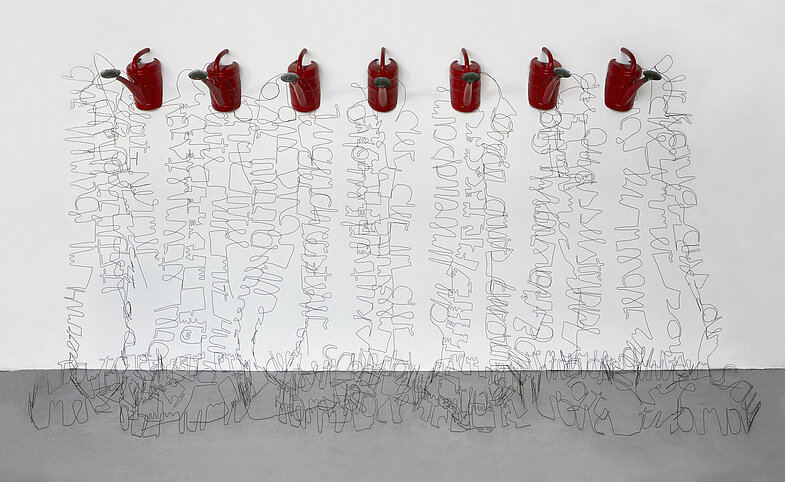
Since 2002 I left my studio again and again and began to collect defining fragments of individuality: hair, fingerprints, small personal objects as well as poetic, humorous or serious statements about the self. For example, I asked the participants of a meal in a restaurant in Dortmund for a fingerprint and an expression about themselves and put these materials together in the studio to create the work Tafelrunde. I collected similar fragments in Munich (Kennkarte), in Herne (In der Nachbarschaft), in Paris (Pariser Gäste), in Dortmund (Numerus tu), and so on. Traces of personality often come to the fore, reflecting the formative conditions of the place.
In the work "Warum stößt der Wal mit jedem Atemzug eine Fontäne aus?", I break away from the principle of site-specific work. From the spouts of seven watering cans, sentence fragments bent in wire gush like fountains - collected self-expressions from many actions - pars pro toto.
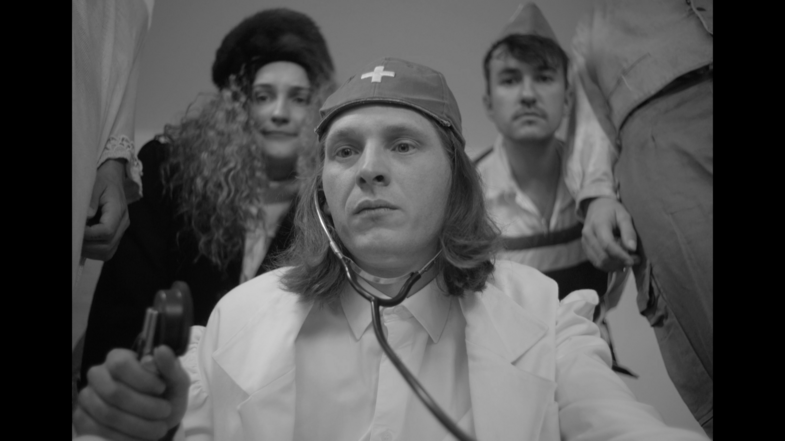
A drone chases a Jeep Cherokee driven by Verena Bahlsen, which is approaching old Bertha Krupp's estate. Dust stirs up. You can hear the podiatrist's hair dryer. In the dining room, Bertha's little dog is nibbling on the shortbread cake she has brought with her. A veterinarian rushes to help the unvaccinated animal, while Nicola Perscheid is annoyed by the poor lighting conditions for the family portrait.
Last summer, the first episode of the latest reality film series "Welcome to the World of Opportunity" was filmed in the former Hochsauerland Krupp-youth-home. This was built in the 1950s for trainees in the steel industry. Since its closure, it has been inhabited by very special personalities, around whom bizarre rumors and legends still revolve today in the Winterberg ski resort. The pilot episode "Welcome to the World of Winterberg" reports on the living conditions of one of the most influential industrial families of the 19th and 20th centuries.
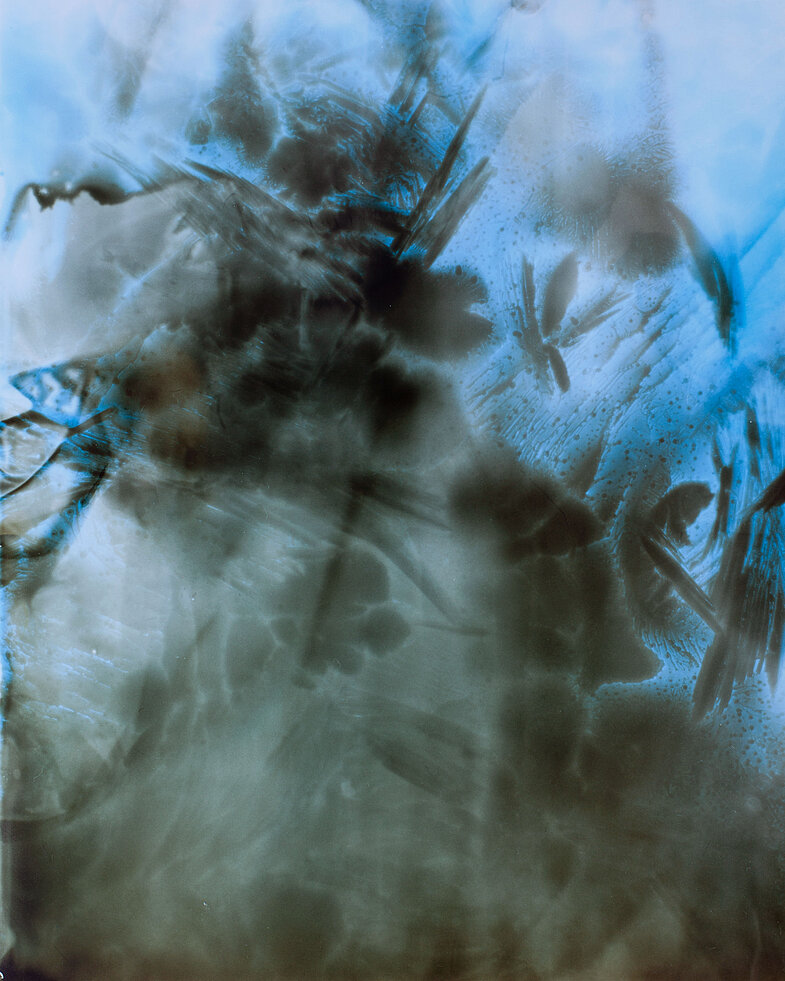
The abstract images of Eveline Kulik emerge in the darkroom without prior use of a camera. Here the artist draws on the very own means of photography: light, light sensitive materials and chemicals to begin, influence,form and stop the process. Over a period of time, each work undergoes several stages of development and becomes a unique form. The resulting abstract work evades radically the representational function of photography. The individual images are made of the moment when the process of making has been stopped by the artist. A process which remains until the final stage open-ended. Being nonrepresentational, Eveline Kulik’s work appears to dissolve, inviting to immerse oneself into a space without any concrete entity.
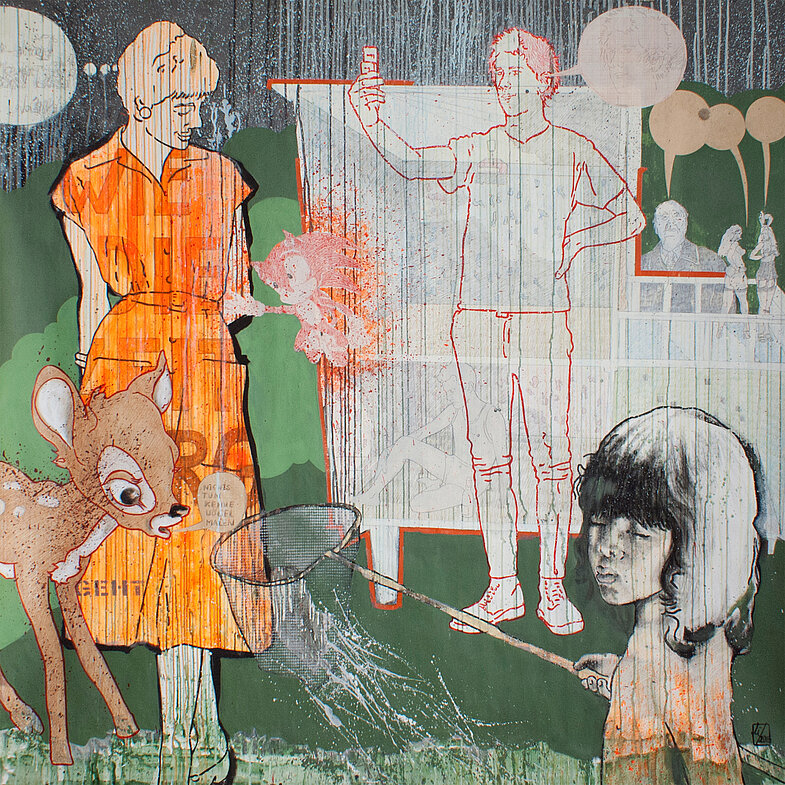
"Zusehen" is part of the ongoing series 150x150, which to present comprises four works. In a kind of battle, two artists work simultaneously on the same theme for a month on a 150 x 150 cm drawing paper without the possibility of exchanging their piece until the time limit is over.
Silvia Liebig’s practice concerns pattern-like structures that underlie various areas of life. Within her artistic work, she regards everyday life as a cultural asset. In dealing with her subject-matter, she uses a variety of media and devises unexpected approaches.
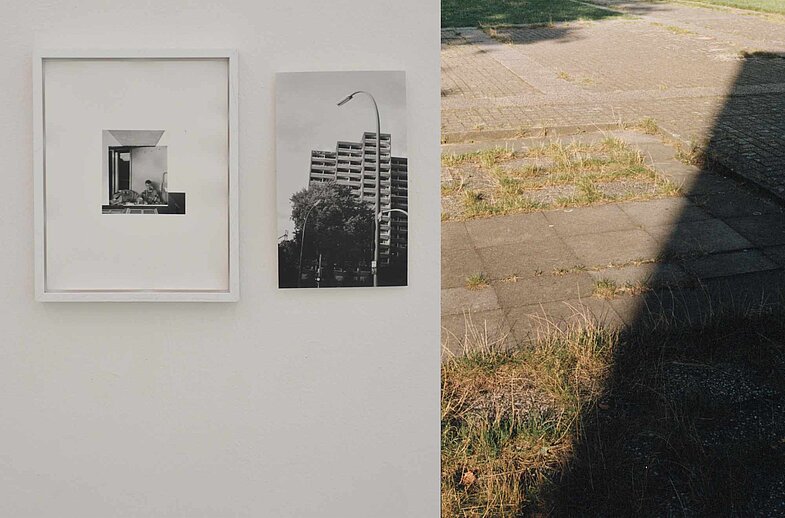
The young photographer, Mahalia Matheja, approaches her subjects with a calm gaze. It is rather unpretentious places that she detects with her analogue camera. She often works with repetitions within her photo series. In some photographs, she extracts elements and integrates them elsewhere. To do this, she starts collaging in the darkroom, where she exposes sections from negatives on photographic paper several times. In her work Werden wir mehr Himmel sehen? (Will we see more sky?) she develops a series of photographs that combine like associative images to create a subjective and aestheticizing portrait of a high-rise building at Kielstraße 26 in Dortmund. The building is currently being demolished. The artist asks herself: “When the skyscraper is gone, is there a reason to look as much up – into the sky?”
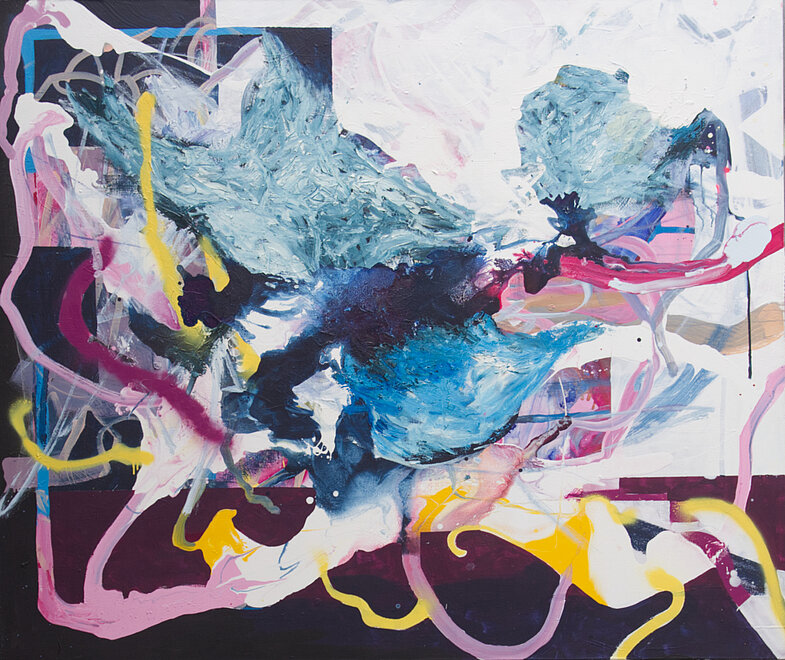
Steffen Mischke uses multimedia working methods in his work. Alongside photographic products, intervening installations and ephemeral sculptures in public spaces, painting is at the centre of his work. With the exception of a few figurative works, objectlessness, the abstract, determines the content of the paintings. In almost anarchic explosions of colour, line, surface and form are juxtaposed on the picture supports. Broadly set, gestural brushstrokes contrast with tachist as well as formally clearly structured surface elements and lead to an energetically dynamically charged all-over. The superimposed layers of heterogeneous textures thus create a discontinuous rhythm in the compositions. The mostly medium- to large-format canvases are created serially. Mischke is always looking for new effects in his painting by experimenting with different painting media - whether acrylic, spray paint or oil crayon. Thus, many works are brought out again and again, reworked and subjected to a continuous process. (Andree Putz)
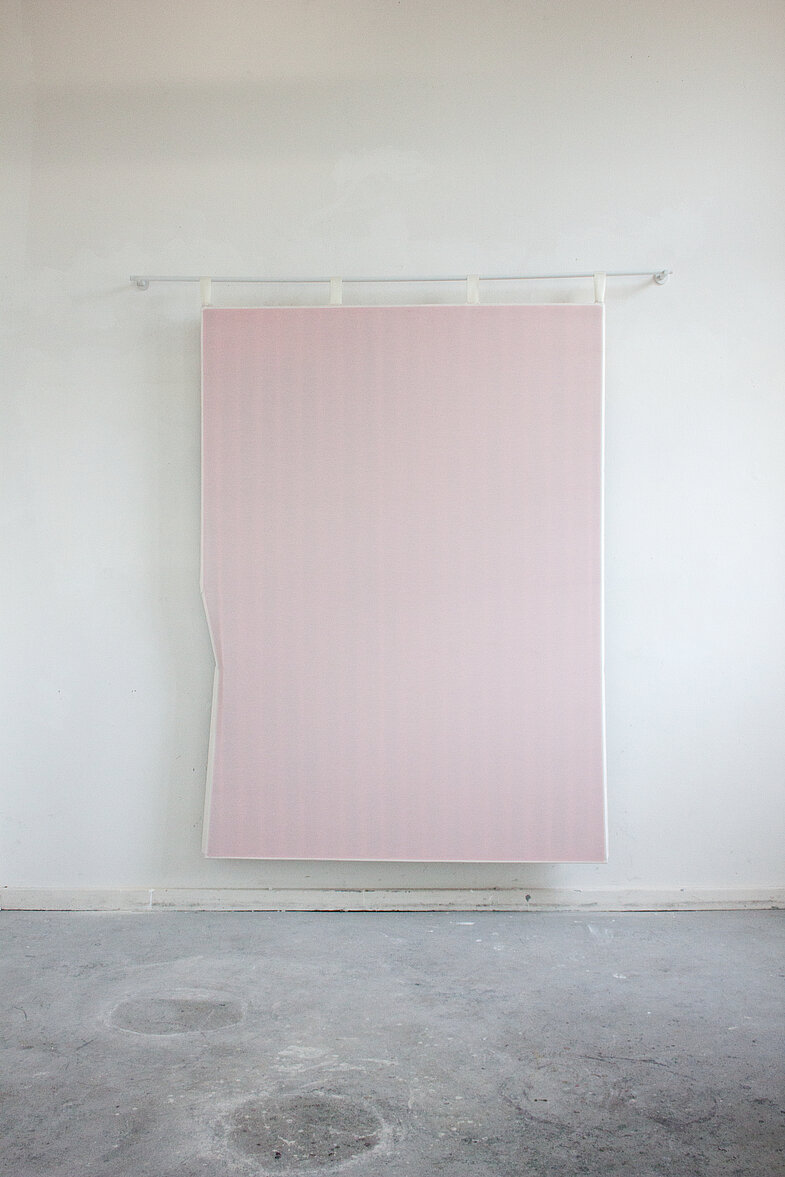
Ulvis Müller's (*1991 in Riga, Latvia) artistic work investigates genre-specific border areas of artistic media and from this, visually formulates a concept of object-oriented
pictorial contexts that deal ambivalently with their associated attributes and artistic methods and first and foremost call on us to understand the image as an object. In
the more recent works, the artist takes up situational moments of everyday life in this and artistically creates something that wants to transcend itself in an ambiguity of
memory and repetition (past/future) - thus believing to be artistic but at the same time not believably "kunstet" ("becoming art" cf. Ludger Schwarte - Notate für eine
künftige Kunst).
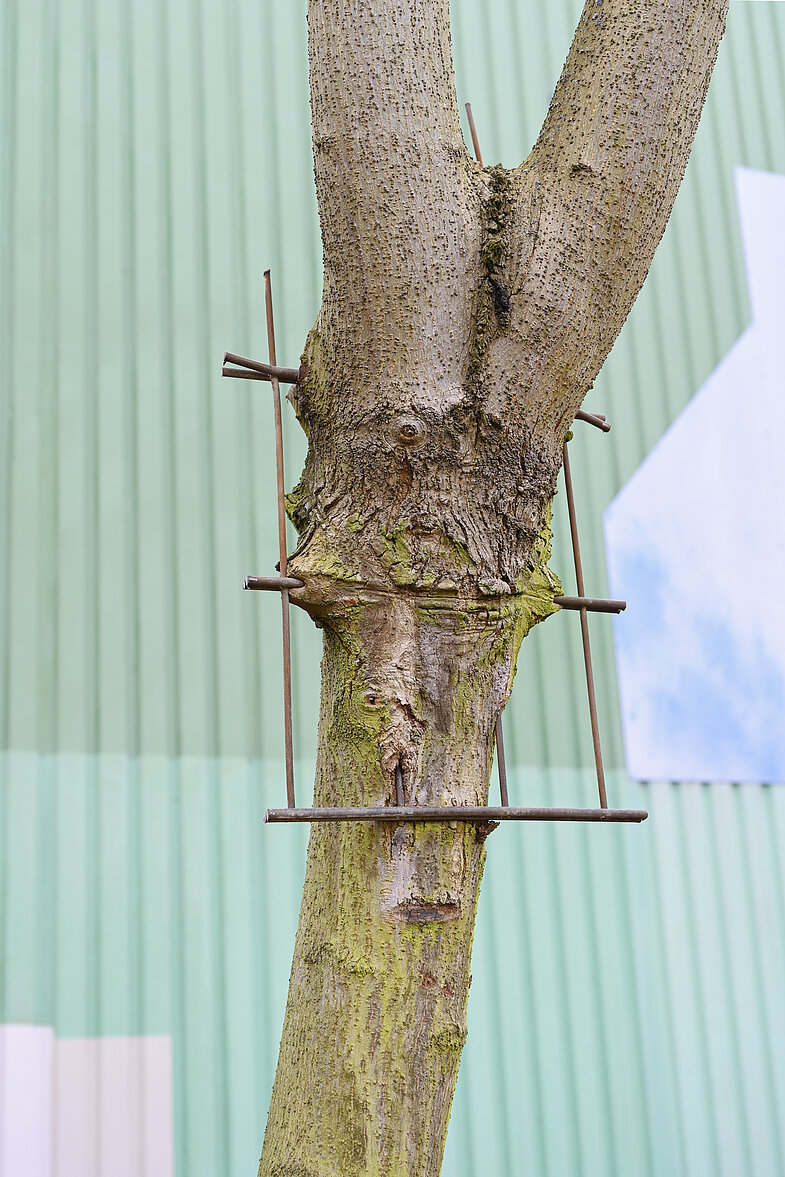
In my artistic work I deal, among other things, with the phenomenon of territorial boundaries as double-rod fences. This form can be found both in the idyllic residential area as well as in industrial areas and along the railroads of the Federal Republic of Germany, Austria and neighboring countries. This fence system has been used for several decades. As an inconspicuous and simple object, the double-rod fence is an essential part of the urban cityscape.
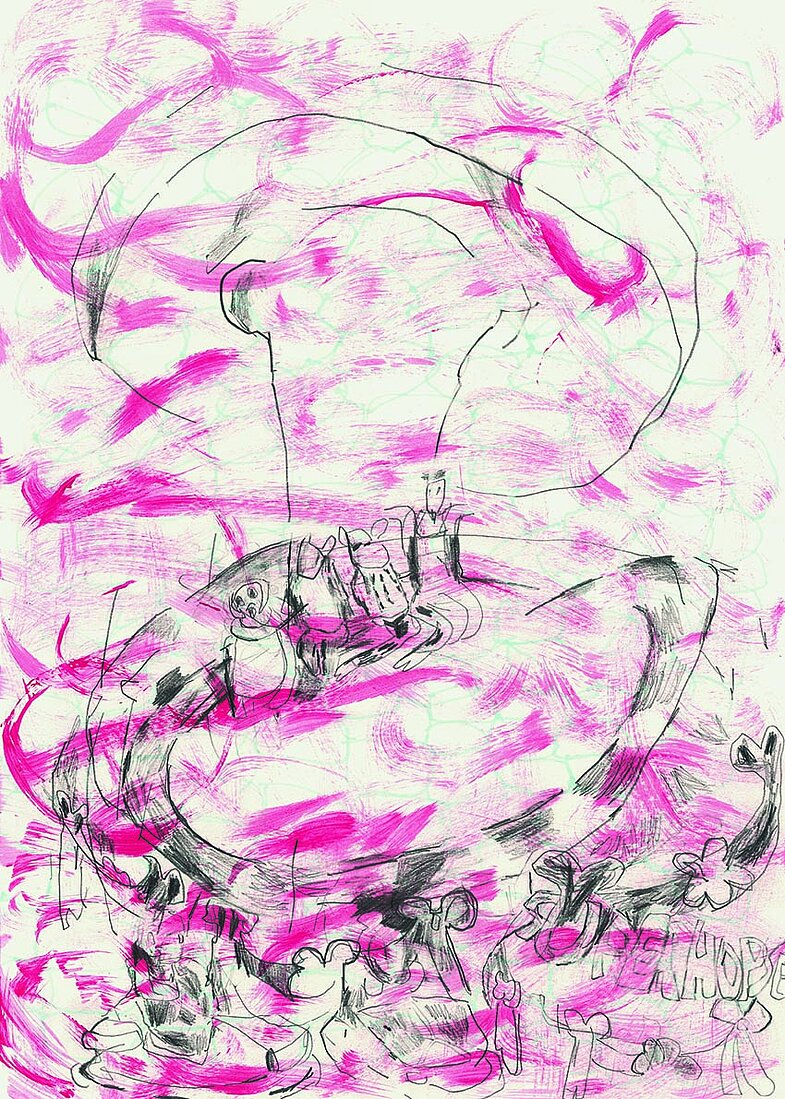
Matthias Plenkmann works as a graphic artist, printmaker and multimedia artist. As a graphic artist, he always works in situ (on site) at first. In further work phases, drawings are then made consisting of set pieces from the drawings made on site. Places, beings and things in the visible and invisible world are at the center of his work. In the process of the drawing, the outer and inner worlds intertwine, abstraction, noting, inventing, shifting, stretching and motifs overlaying takes place.
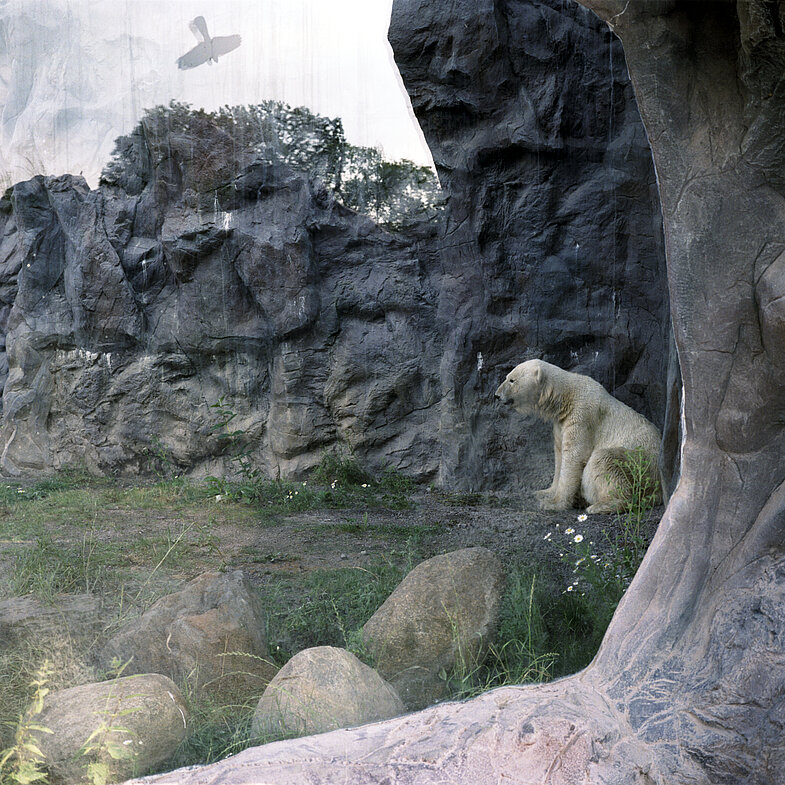
"Ich möchte ein Eisbär sein im kalten Polar
Dann müsste ich nicht mehr schrei'n
Alles wär' so klar"
from the song Eisbär by Grauzone, 1981
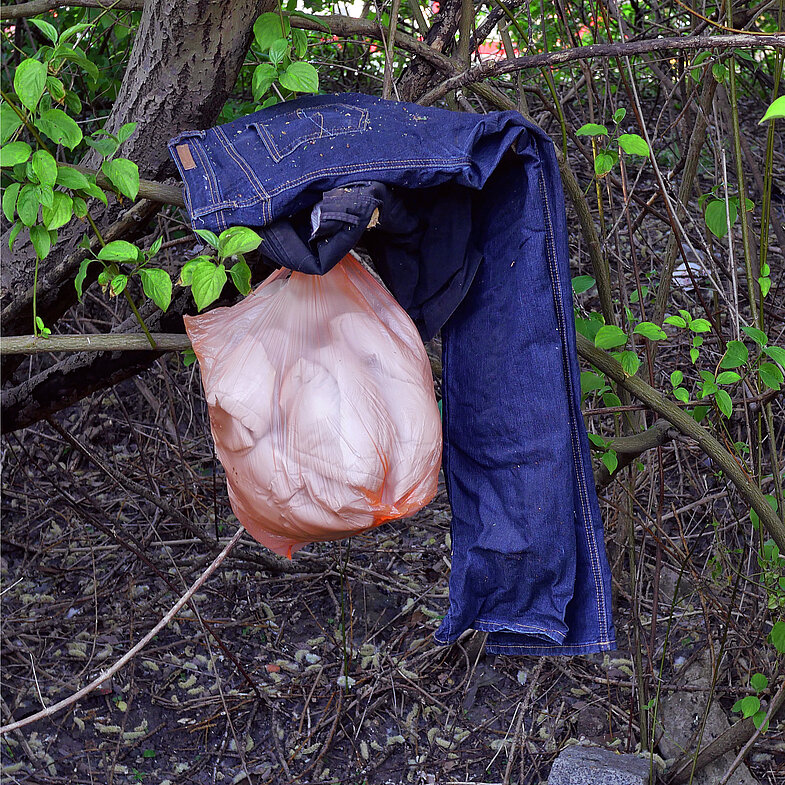
Gerd Schmedes - Avoided photography
While the applied photographer creates his visual identity on behalf of his customers, the "averted photographer" is free from any external purpose. In contrast to the popular subjects of classic photography, e.g. the travel report, the averted photographer turns away from the "exotic" - towards the smaller things of the immediate everyday life: the seemingly banal against the splendor of the big stage. He doesn't have to fly to the shoot because he is always there by bus, train, bike or on foot and avoids places that are crowded or popular.
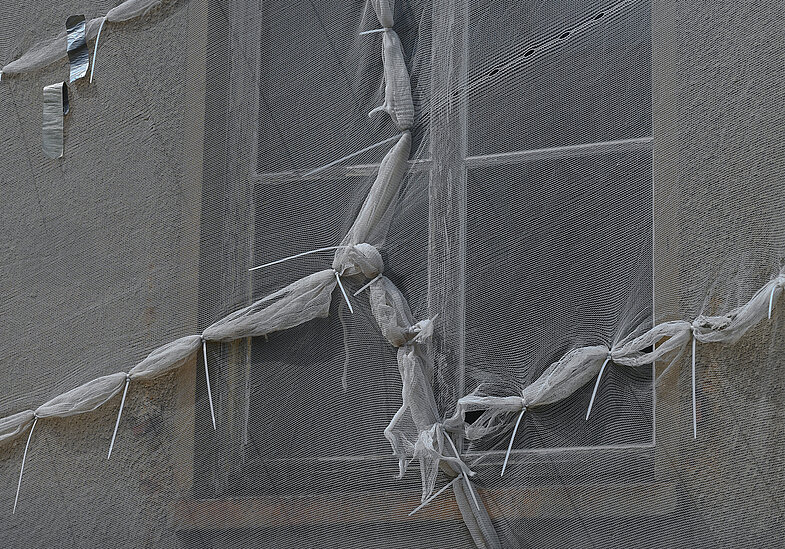
Laila Schubert is a Master's student of photography at Dortmund University of Applied Arts and Sciences and is involved in the art and culture association Atelier Amore e.V.. She mainly uses the medium of photography, but is currently developing multimedia exhibition projects and pursuing an installative approach. The focus of her artistic practice is the examination of spatiality - in fictional as well as real spheres. From different angles, she tries to draw ideas of society, show unusual perspectives and, through a photographic approach, create a narrative.
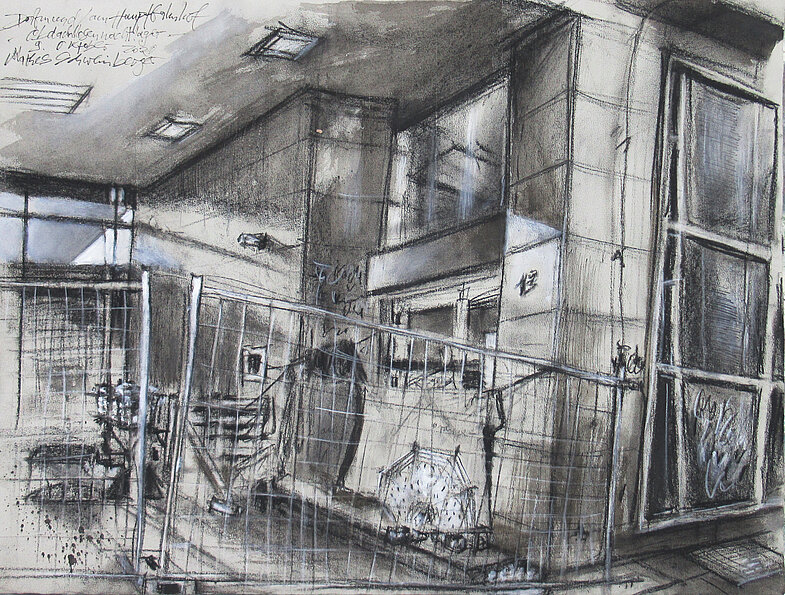
Mathes Schweinberger is one of the last street painters/drawers in the Ruhr area. In times of pandemic, he has made it his task, equipped with paper and charcoal, to depict out-of-the-way places on the fringes of normally functioning social life.
He places himself in front of more or less provisional homeless shelters, whether at the main train station, in the city center or under bridges, and captures these places, which he calls "lost places," with a practiced stroke.
Often he gets into conversation with the inhabitants of these camps, finds encouragement and sometimes also mistrust or even rejection.
It is important to him to practice art as a way of communication in direct exchange with the people on the street, to live his profession in constant directness on the street.
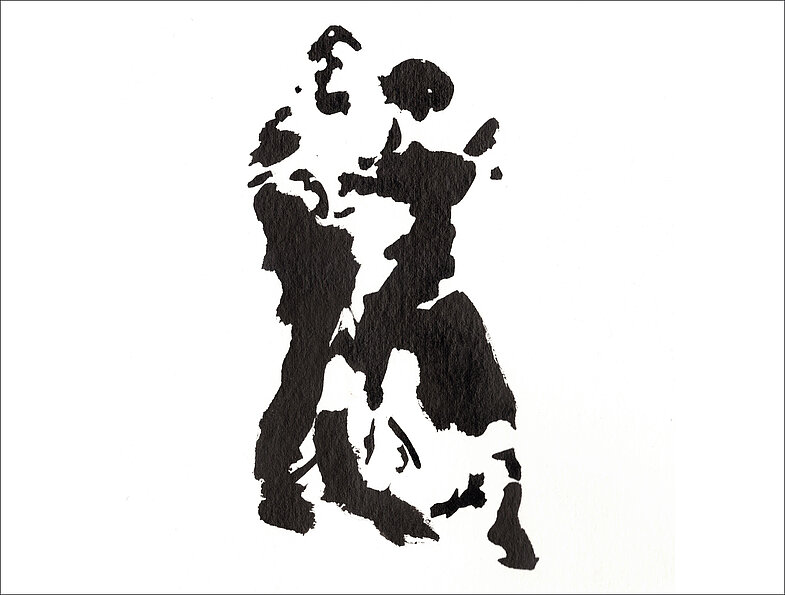
The appearances of reality are the starting point for my artistic work. "To draw everything" - the sketchbooks provide information about this. In the affirmation of the
moment and in the constant change of reality as well as a multitude of unusual designs of observed extracts of reality. In the actions of musicians, artists, dancers or people in everyday situations - in other words drawing and painting on the spot - is the starting point for my artistic work. I see drawing as the core of my art. I study the body language expression of my, in this case, constantly moving models.
During the Corona respite in the summer of 20/21 I was able to visit the dance school "Tango Pasión" in Münster for a few months. Apart from my own efforts to learn this dance, I was also able to make graphic studies during the dance classes of the advanced dancers. This resulted in digital and analogue sketches as well as ink drawings.
ink drawings . The fact that the works were created on the spot and in just a few moments led me again and again to the question: What do I see? The dancers as
individuals? The relationship between the dancers? The movement? The gesture? The music? Everything all at once? The viewer may decide for himself or herself.
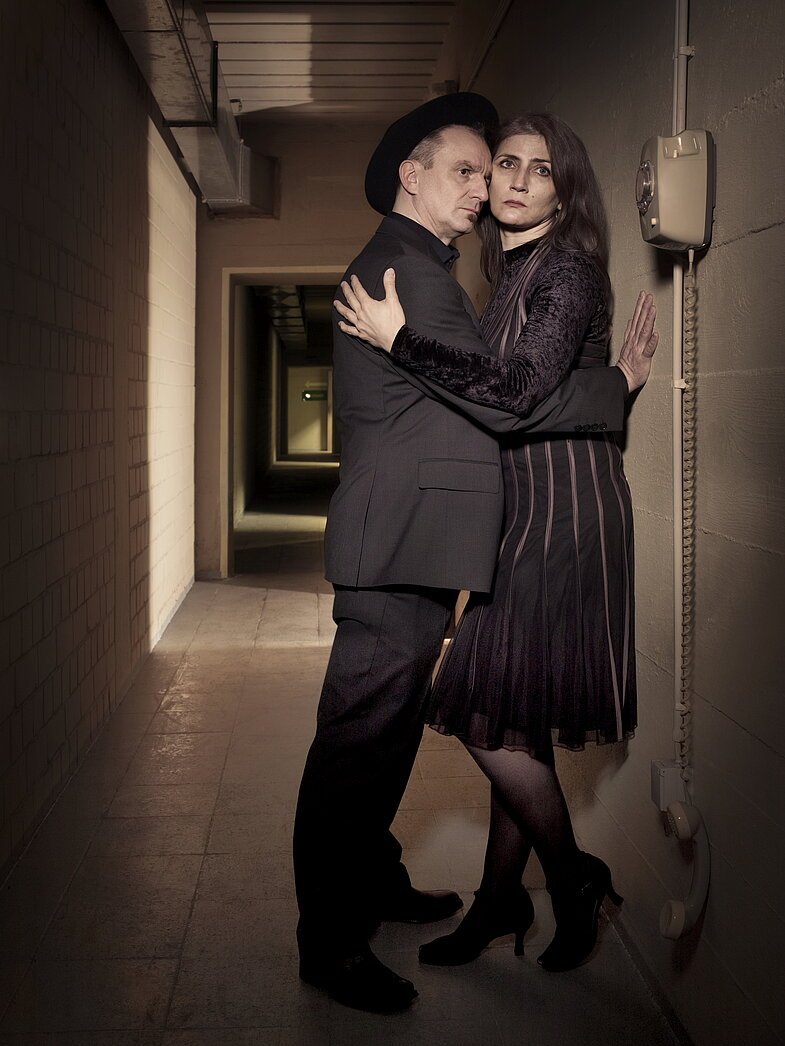
Even after the end of the Cold War and the apparent disappearance of a military threat scenario, there are still sublime fears. For example the Fear of a nuclear catastrophe, which has been conceivable since Fukushima at the latest. What will remain of our present livelihoods in the future? What do people feel when they go to the obsolete protection of bunker rooms? What or who do you take there with you? Document of a life between destruction and hope, between repression and perception.
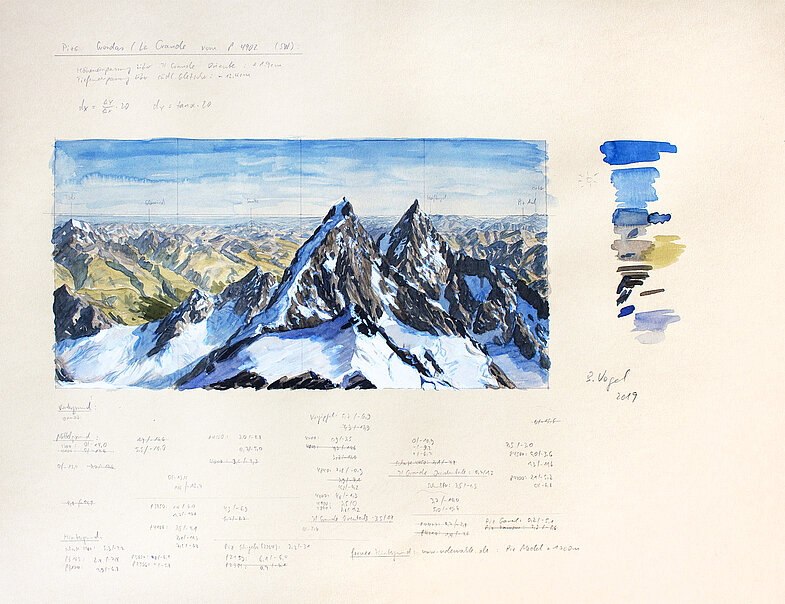
For a long time, my artistic focus has been on spatial play, more precisely in the invention of mountain landscapes. For their development I do cartography backwards. First, I create the fictional landscape by drawing a topographically accurate, true-to-scale map. From this view I construct views by hand with mathematical precision. If a view appeals to me for further processing, I paint it in oil on canvas. Here I show works from my third fictional mountain landscape, the Pizs Grondas / Le Grandi massif, in German "the big ones(mountains)". It plays with the idea that in the heart of the Alps, near the Gotthardt Pass, there is a mountain range of superlatives. All alpine myths and clichés culminate here.
www.benjamin-vogel.de
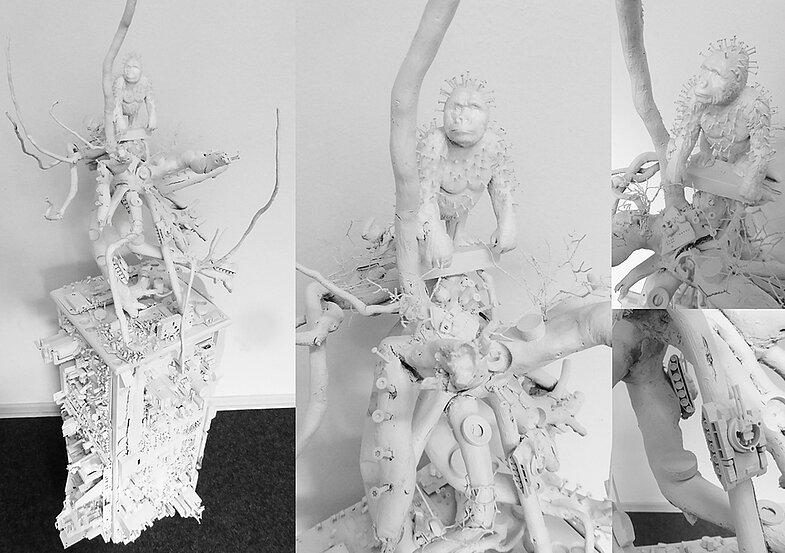
Viola Welker is a German painter and illustrator. The central theme of her works is the creature, a created being that appears as a human, animal, plant, as well as a fable-like being.
Within the series "Symbiotic ruins" it is precisely this creature that seems involuntarily integrated in the technology-oriented environment of man. It enters into an ambiguous symbiosis with a constructed world of captivity and destruction. Any attempt to rise out of this world only leads to further entanglement, fate, and ultimately to complete assimilation.